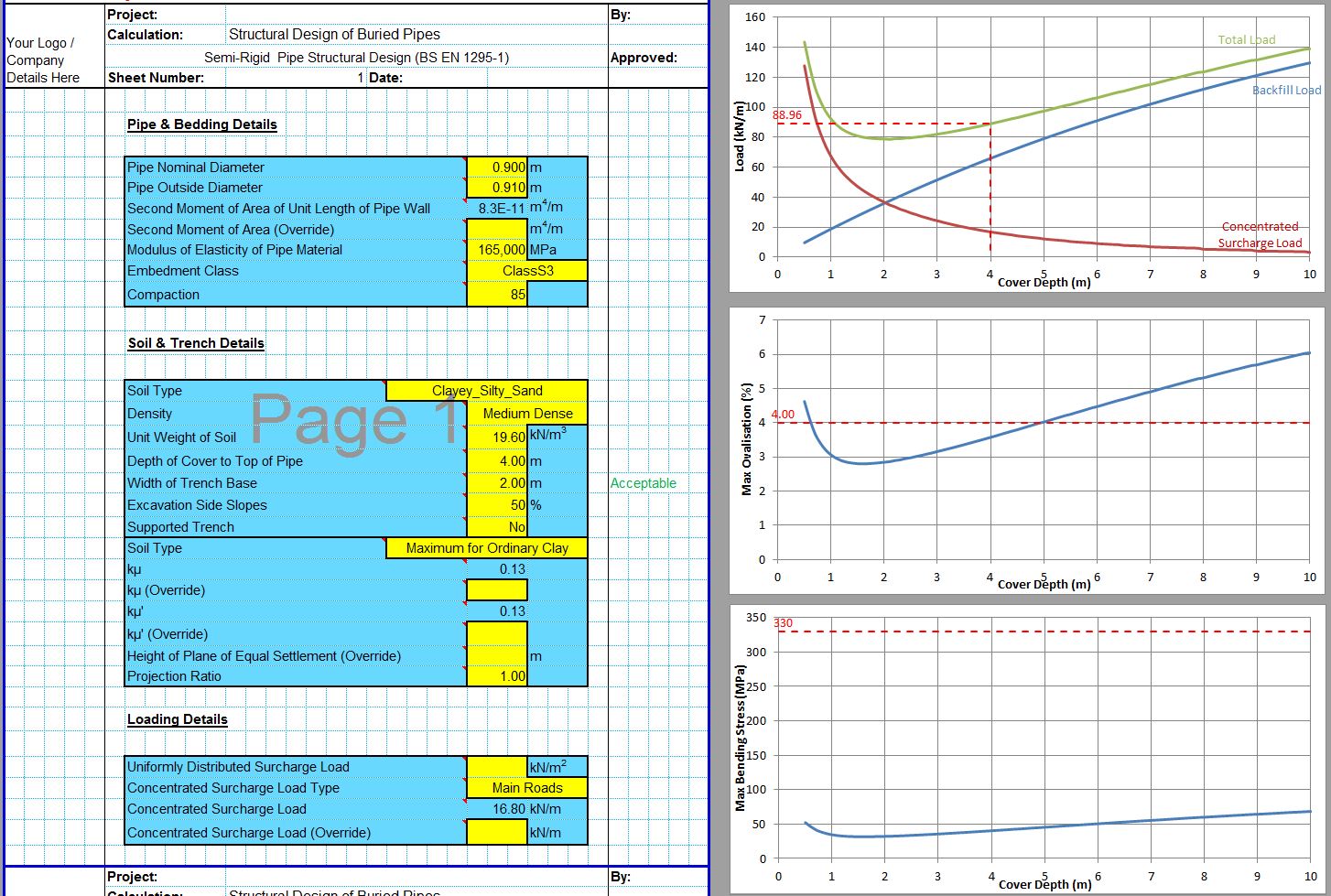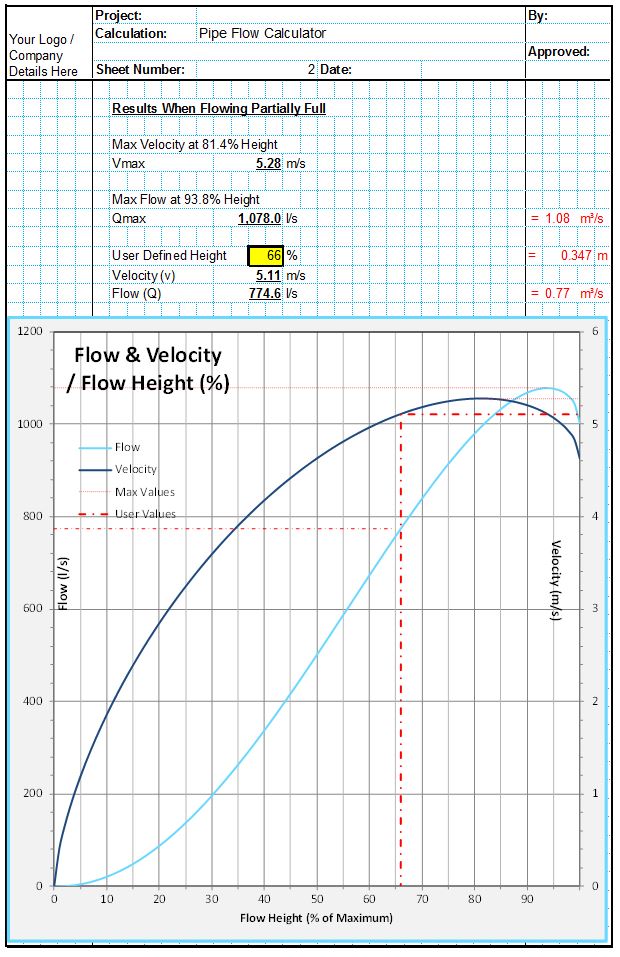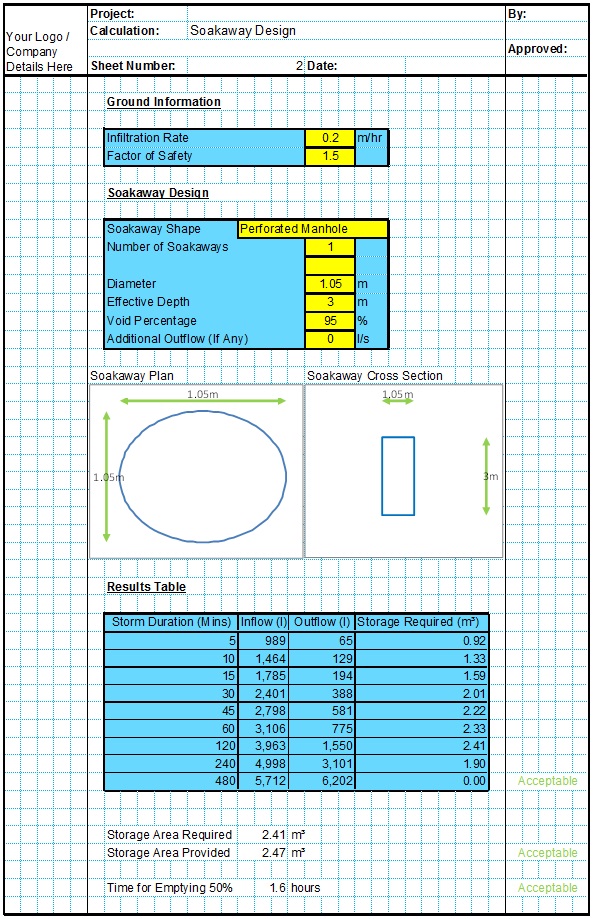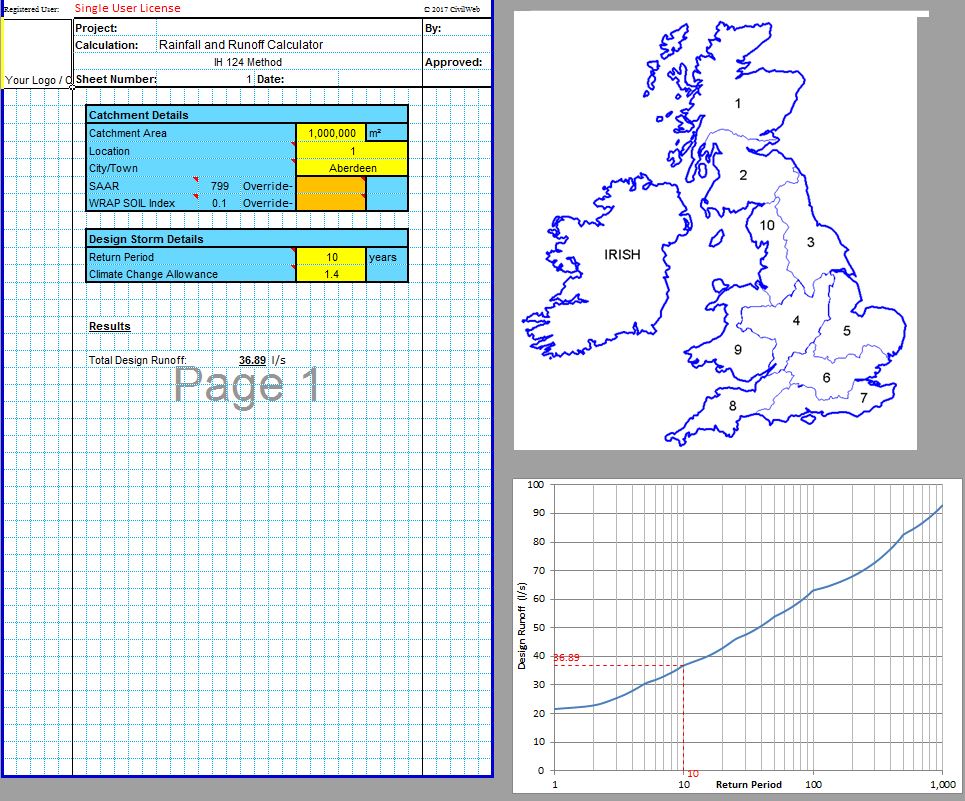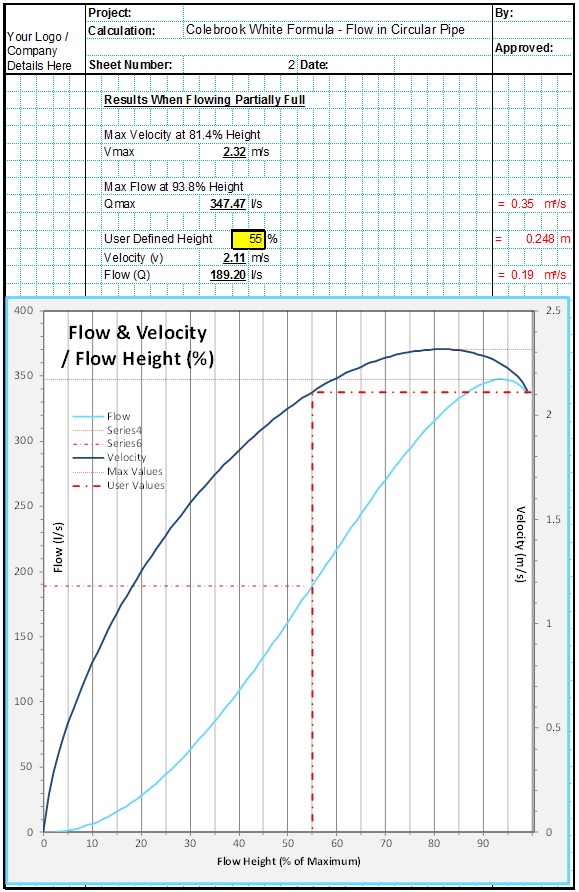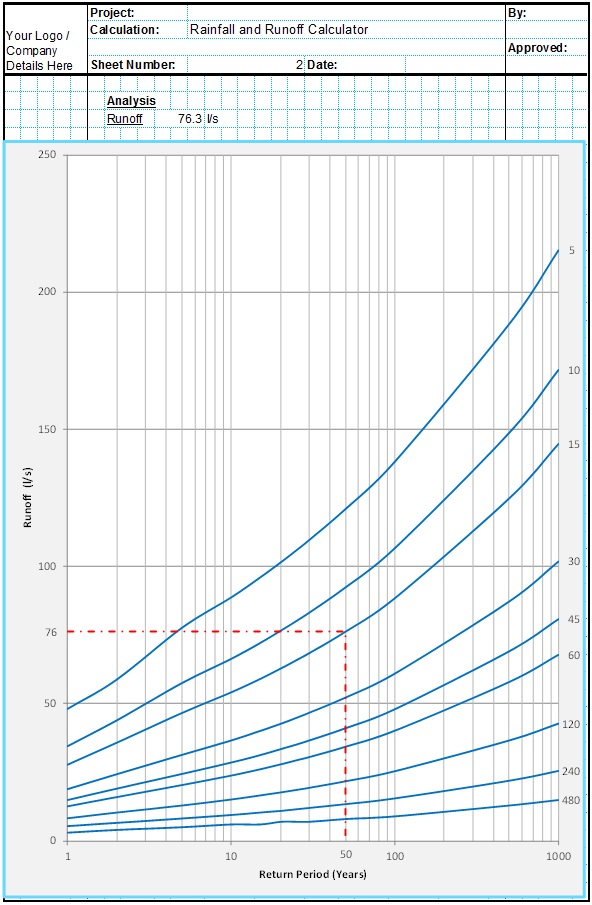French drain system design can be fairly straightforward so long as the right information is available to the designer. The principle of french drain design is simple, the french drain must be able to intercept and remove the total volume of rainfall runoff produced by the design storm on the catchment considered.
The CivilWeb French Drain Design spreadsheet includes all the tools required for detailed french drain design based on the principles outlined above and in the SUDS Manual. The design process used by the spreadsheet is explained in detail in the comprehensive 73 page user guide provided with the spreadsheet. This process is also detailed in a number of technical posts on this site as detailed below.
French Drain Runoff
Firstly the volume of rainfall runoff must be determined. Generally this is done through a simple variation of the rational method, though more complex analysis can be undertaken if required. This is critical in determining how big the french drain system needs to be and also how often it will flood. This is explained in our French Drain Runoff post.
French Drain Width
Next the french drain system must be designed so that this runoff rate can be accepted by the filter material and transferred down to the perforated pipe. This is largely a function of the permeability of the filter material and the french drain width. This is detailed in our French Drain Width post.
Perforated Pipe Design
Finally the perforated pipe must be designed to accommodate the design runoff flow. This is split into two parts, firstly the perforations in the pipe must be suitably large and frequent enough to allow the flow into the pipe. Then the perforated pipe must be large enough to convey the design runoff flow. This design process is detailed in our Perforated Pipe Design post.
French Drain Grade
An important aspect of the perforated pipe design process is the french drain grade. The french drain system must be installed to a suitable grade in order for the perforated pipe to flow correctly. The grade must also be consistent along the run to avoid a bottleneck effect. This is explained in our French Drain Grade post.
Spatially Varied Flow
An alternative method of calculating the capacity of the perforated pipe within the french drain system is to use a much more complex design model which includes the way that the perforated pipe accepts flow along the whole length rather than all at once. A design tool for spatially varied flow analysis is included with the CivilWeb French Drain Design spreadsheet and the detail of the model is included in our Spatially Varied Flow post.
French Drain Details
After the french drain system has been designed, next the detail must be determined to ensure that the french drain system is able to perform as designed. An explanation of the main considerations and some typical design details are included in our French Drain Details post.
French Drain Depth
An important detail is the depth of the french drain system. The french drain system needs to be deep enough to protect it from surface loads and the depth needs to suit the grade of the perforated pipe. This is explained in more detail in our French Drain Depth post.
French Drain Filter Fabric
French drain systems are usually surrounded in a geotextile filter fabric to prevent fine sediments from migrating into the french drain system. This filter fabric must be carefully specified in order to perform as required, as explained in our French Drain Filter Fabric post.
Fin Drain
One variant of the traditional french drain system is the fin drain which can be installed in a very narrow trench. This detail is explained in our Fin Drain post.
Curtain Drain
Another variation is the curtain drain where a french drain system is used specifically to intercept groundwater or runoff flowing down a slope. Design and detailing of curtain drains is explained in our Curtain Drains post.
French Drain in Clay Soil
French drain systems in clay soil need to be designed and installed with particular care, as detailed in our French Drain in Clay Soil post.
French Drain Water Quality
The water quality performance of french drain systems is typically quite good and this can be utilised to help as part of a full SUDS design for a development. This is explained in detail in our French Drain Water Quality post.
French Drain Installation
After the french drain system has been designed and detailed, it must then be installed in the correct manner. Careful installation is vital in assuring that the french drain system will perform as designed for the duration of the design life as detailed in our French Drain Installation post.
French Drain Maintenance
Once installed the french drain system must be maintained in order to prolong its life. Suitable maintenance activities are detailed in our French Drain Maintenance post.
French Drain Clogged
If the french drain system is not suitably maintained it will begin to drain more slowly and will eventually clog up entirely. Prevention and repair of clogged french drain systems is detailed in our French Drain Clogged post.
French Drain Repairs
Other french drain system problems and suitable repairs are detailed in our French Drain Repair post.
Get your copy of the CivilWeb French Drain Design spreadsheet now for only £20.
Or why not bundle with the CivilWeb Soakaway Design spreadsheet for only £5 extra?
Or save £50 by buying our full Drainage Design Suite including all our drainage design spreadsheets.
Download Free Trial Version
To try out a fully functional free trial version of this software, please Click Here or enter your email address below to sign up to our newsletter.
